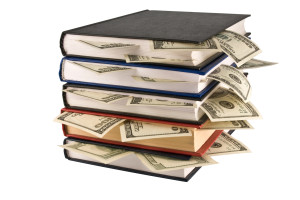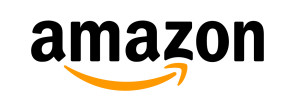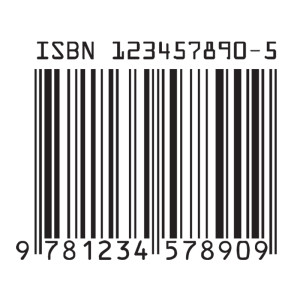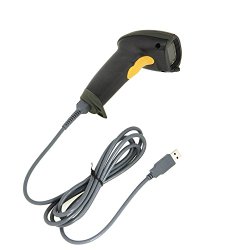
Hey everyone! This blog post marks the first in a series of interviews with textbook buyback companies that let you sell books for cash online.
Instead of just reading my articles on the best buyback textbook website, you’ll now learn what books these companies buy, how much they’ll pay, and how you can send books to them to make extra money – from the people who pay cash for your books!
Our first interview is with one of my favorite textbook buyback programs – Textbooks.com. I’ve sold thousands of books to Textbooks.com over the years and have earned thousands of dollars from them.
Textbooks.com’s Director of Contact Center Operations, Chris Gibson, was nice enough to answer some questions about how Textbooks.com buys books. Thanks Chris!
Let’s see what he has to say:
How long has Textbooks.com offered a book buyback program?
Textbooks.com was established in 2006 and has offered a buyback program since that time.
How many books does Textbooks.com buy each year?
Textbooks.com purchases hundreds of thousands of books across many subjects, genres, and majors each year.
Can anyone sell used books for cash to Textbooks.com?
Anyone with an Internet connection can sell books to Textbooks.com! We have one of the largest buyback programs available online and offer free UPS shipping for our buybacks.
Do you have to live in the US to sell books to Textbooks.com?
You have to be based in the US, with a US address, to sell books to us. We do not ship or do buyback internationally.
What types of books does Textbooks.com buy?
We offer buyback value on books across all subjects and genres. These buybacks range from human biology and algebra, to a variety of Shakespeare classics.
What types of books does Textbooks.com not buy?
We typically don’t exclude specific genres or subjects from the buyback program, but we don’t purchase international editions or annotated teacher’s editions.
Textbooks that are international or teacher’s editions will usually have “International Edition” or “Teacher’s Edition” printed on the cover.
How much money will Textbooks.com offer for a book?
We offer a wide range depending on the demand for the book. Trade titles like The Great Gatsby are among the lowest value books that we purchase back, while some titles related to biology, microeconomics, and calculus have buyback values well over $100.
While we don’t have a specific minimum for an individual book, there is a $10 minimum to process a buyback order, so it can be made up of several lesser-priced books.
Are there certain times in the year when Textbooks.com buys more books?
While we offer buyback value on a large list of books year-round, certain times of the year – like December and May – see an increase as students finish using their books for a semester.
How to Check If Your Book Condition is Good for Textbooks.com
Do you buy books that have underlining and/or highlighting in the pages?
Any color or mixture of color is acceptable for highlighting, as long as it does not obscure any portion of the text. If any of the text becomes unreadable, we’re unable to purchase that book. Our guideline for writing or underlining is limited to 50% of the book, provided that it does not obscure any portion of the text.
Workbooks and study guides are graded differently due to the nature of needing to work directly in the book. Up to five pages can contain writing in pencil; any writing in pen is unacceptable.
These guidelines are put in place to benefit future customers. We hand-inspect all books that are sold back to us and we guarantee our used books. On the website, you’ll see books sold directly from Textbooks.com marked “Certified Used,” which provides peace-of-mind to our customers.
Sometimes, the book’s previous owner writes notes in the margins of a textbook. Do you accept books like these?
Notes in the margins are acceptable, as long as they are not written on more than 50% of pages in the text and as long as they don’t obscure any of the text.
Do you buy ex-library books with library stickers and stamps?
Yes, we purchase ex-library books. As long as the book is in good condition, it’s eligible for our buyback program.
When is a book considered not in “good condition”?
Textbooks.com won’t buy books with the following conditions:
• Water damage or stains of any kind
• Missing, torn, or loose pages
• Damage to the cover, binding, or spine
• Any marking inside the book that makes text unreadable
• Publisher defects
While publisher defects are not common, the most prevalent issues we see are sections that are out of order, a section missing while another is repeated in its place, or text that is printed upside down in relation to the front cover.
Some textbook retailers sell books with lower standards than Textbooks.com. We see some books come through the buyback program with signs of water damage, stains, or ruffled pages that may have been present when the student purchased a book elsewhere.
This leads some students to think that water damage is acceptable for used books, but we’re unable to purchase a book that has any degree of water damage.
It is also possible that a customer may have a book that has been stickered incorrectly. Instead of using the ISBN found on the sticker on the back on the book, it is best to use the information available on the copyright page.
What is an ISBN?
An ISBN is a 10- or 13-digit code assigned to a book. It’s located on the copyright page inside the book and usually also on the bar code on the back cover, although we recommend using the one on the copyright page.
Searching by ISBN ensures you are getting a quote for the correct book. There can be many versions or editions of a given title; some may be custom editions, some may come with online access, some may be packaged with additional components. Each “version” of a title will have its own ISBN, so it ensures we’re talking about the same book.
Sometimes the book’s bar code shows the Universal Product Code (UPC) which is not the same as an ISBN. Remember – 13-digit ISBNs start with “978,” and 10-digit American ISBNs start with a “0” or “1” (foreign ISBNs can start with different numbers).
What else might make a book unacceptable to Textbooks.com?
Any components listed in the title of a book need to be included with a buyback; that means items like DVDs, CDs, workbooks, etc.
If a buyback quote is supposed to include supplemental components and the book is sent back to us without them, we attempt to pay the customer for what is received, which may be less than the original quote. Sometimes a package won’t have any value unless everything listed in the title is included.
When looking to sell a loose-leaf item, it is important to make sure the correct ISBN is being used. While we may be purchasing a hard or soft cover text, we won’t always be purchasing the loose-leaf version of that same title.
What do you do with buyback books sent to you in poor condition?
If we receive an item in unsellable condition, we notify the customer by email and detail the reason why it can’t be purchased. We also provide instructions on arranging a return if the customer would like the item back. If the customer decides they no longer want the item, it is recycled.
How to Sell Books Online to the Textbooks.com Buyback Website
How do I create a free online account to start selling books to Textbooks.com?
To create an account on Textbooks.com, go to the Log In page in the top right corner of our website. Or you can create an account during the buyback checkout process.
What information do I need to give to get a free online account at Textbooks.com to sell used books and start making extra money?
To sell books to Textbooks.com, we would need the following information for your account: name, email address, phone number, a US-based address, and payment preference (PayPal or check).
Once I open that account, how can I check to see how much Textbooks.com will pay me for my books?
Customers can go to Textbooks.com from their computer, laptop, or mobile device and select ‘Sell Textbooks’ at the top of the page.
Enter any ISBN in the search field to see the buyback value we are currently offering for that book. From there, you can add more books to a quote.
Once all books are added, the seller enters their info and finalizes their quote.
Once finished, you print a packing slip and a prepaid UPS shipping label, and then ship the book(s) to us.
Our buyback quotes are good for 30 days. However we recommend sending in your books right away – so you get your cash faster! But it’s peace of mind for students who want to lock in a good price and still need their book for finals.
Also, customers who have purchased books from Textbooks.com can log into their account and check the buyback section in “My Account” to see what value we’re currently offering on those titles.
How to Send Your Used Books to Textbooks.com for Money
How would you like books to be sent to you?
As long as the packaging is sturdy and the books are packaged well, they should arrive to us in good condition!
It’s important to consider the size of box or envelope that is used based on the number of books being sent. Too much extra room allows books to slide around and can damage them. If any filler is used, make sure it is something that won’t stain. For example, newspaper isn’t a great choice for this!
Wrapping the books in plastic is helpful, in case the books come in contact with any water on their journey to us. This will help prevent any damage in transit.
We’ve had a few buybacks received in cereal or pizza boxes – we definitely wouldn’t recommend those!
What type of free shipping do you offer?
For buyback, we offer free pre-paid shipping labels via UPS. This provides door-to-door tracking and shipments are typically received in our warehouse within 3-5 business days.
Do you provide any insurance with your free shipping labels?
Our buyback labels are not insured. While we rarely see any damage to shipments that are sent to us, customers always have the option of purchasing insurance for added peace of mind.
What other tips you can share for making sure books arrive in good shape so Textbooks.com can pay you money for them?
This is all about packaging! As long as books are sent in sturdy packaging and don’t have a lot of room to slide around inside the box or envelope, they should arrive in good shape.
It’s a good idea to wrap books in something plastic to prevent any kind of exposure to water, especially during rainy seasons. Sellers also have to be sure to include all supplemental components quoted in the offer.
How long does it take for books to get to Textbooks.com – and how long does it usually take before a person gets paid?
Shipments usually arrive to our warehouse within 3-5 business days, depending on the distance from our centrally located warehouse in Columbia, Missouri.
From there, sellers typically get their payments in 1-2 weeks, depending on whether a seller chose Paypal or check. We say to allow up to 4 weeks from the day you send your books to the day you get your money. Paypal is the fastest way to receive a payment.
How can people contact you if they have more questions?
If sellers have questions about the buyback process, they can visit our Help Desk for answers to the most commonly asked questions. It’s definitely the best place to start. For questions about existing buyback quotes or returns, we have a dedicated customer service team and sellers can submit their questions to us via the Contact Us page, email us anytime, or call our toll-free number.
Thanks again Chris! I hope Chris’ answers to my questions have made you more aware of the best ways to sell your used books online for a profit to buyback companies.
If you’d like to start selling your books online, go to Textbooks.com and sign up for a free online account. You’ll be glad you did (I know I was!)
And as always, if you liked this interview and want to receive more tips and tricks for how to sell books online for extra money, subscribe to my blog!
Want to ask me a question or offer a suggestion for a future blog article? Email me at sellbooksfastonline@gmail.com.
Hey, did you know that you can also buy discounted textbooks for college from Textbooks.com and sell those textbooks back to Textbooks.com for cash when the semester ends? Learn more at How to Buy College Textbooks for Less on the Textbooks.com Website.









